Embed presentation
Downloaded 622 times



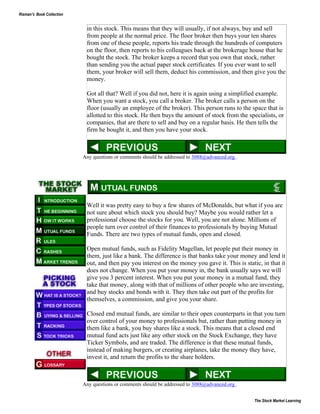





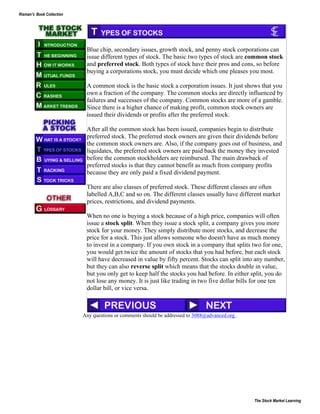
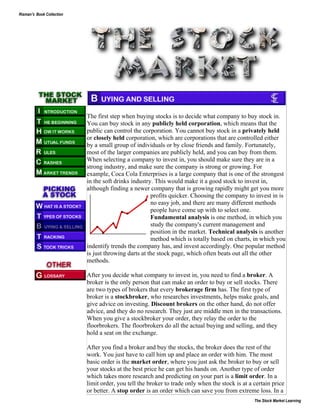
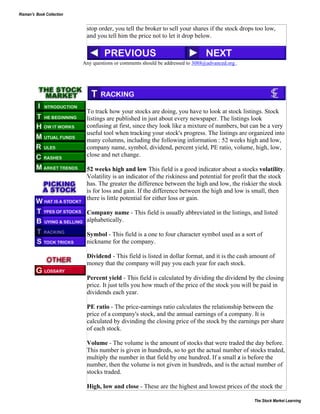
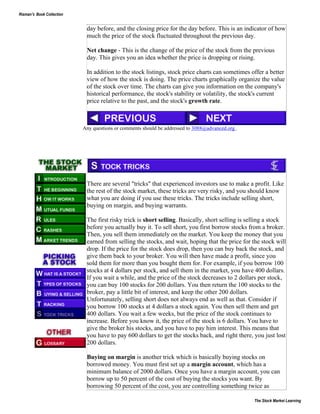


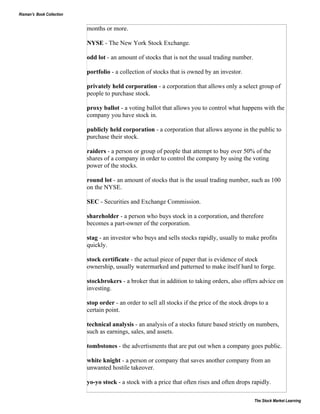


The document explains the fundamentals of the U.S. stock market, emphasizing its role in the economy and how it functions. It covers the history of the New York Stock Exchange, the trading process, types of mutual funds, and the regulation of brokers by the SEC. Additionally, it discusses factors influencing stock prices and the concept of owning shares in a corporation, which gives shareholders a stake in the company's performance.
















